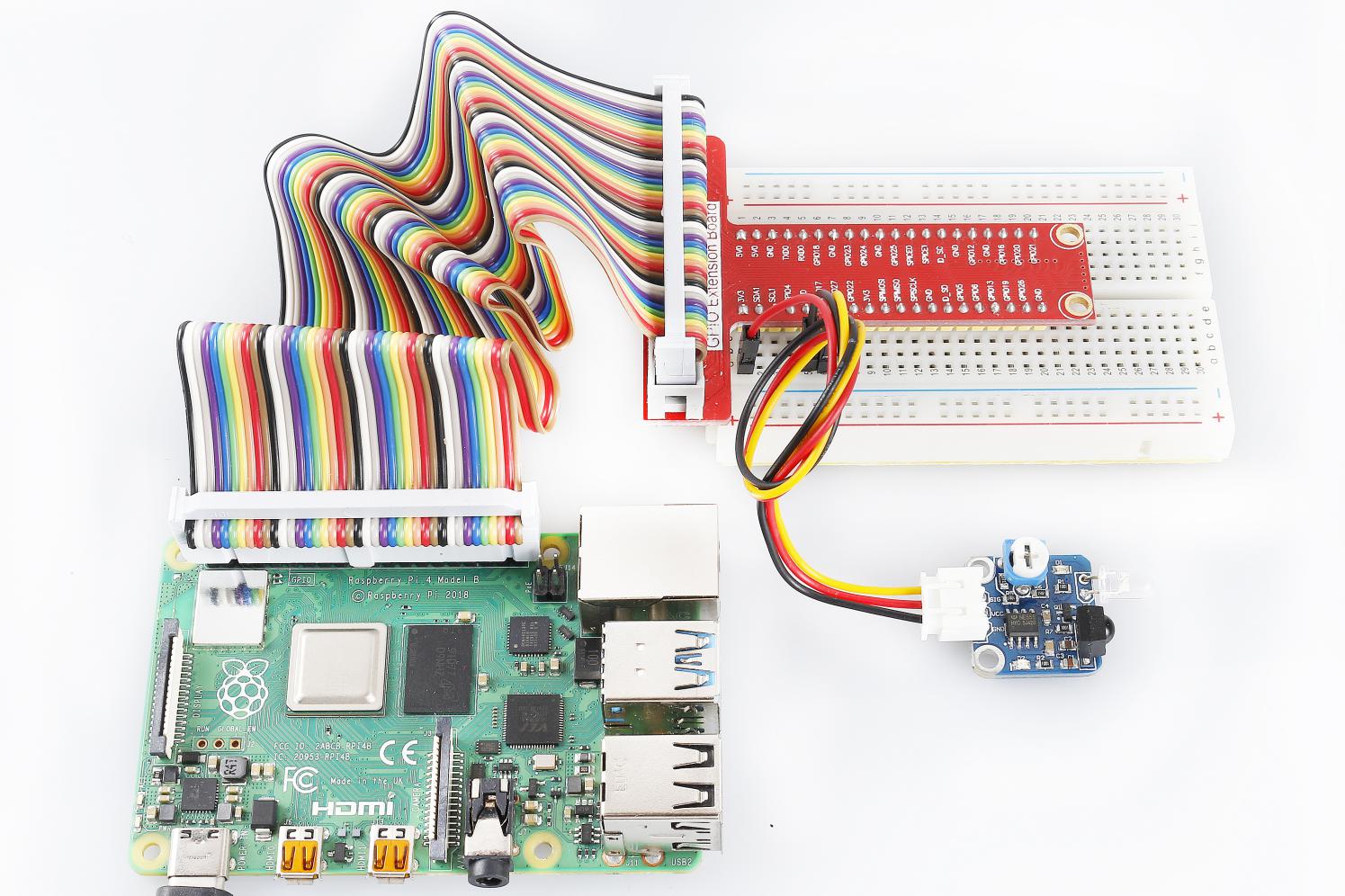Lesson 29 IR Obstacle Avoidance Module¶
Introduction
An IR obstacle avoidance module (as shown below) is used in this Lesson.

Required Components
1 * Raspberry Pi
1 * Breadboard
1 * IR Obstacle module
1 * 3-Pin anti-reverse cable
Experimental Principle
An obstacle avoidance sensor mainly consists of an infrared-transmitter, an infrared-receiver and a potentiometer. According to the reflecting feature of an object, if there is no obstacle, emitted infrared ray will weaken with the propagation distance and finally disappear. If there is an obstacle, when infrared ray encounters an obstacle, it will be reflected back to the infrared-receiver. Then the infrared-receiver detects this signal and confirms an obstacle exists ahead.
Note
The detection distance of the infrared sensor is adjustable - you may adjust it by the potentiometer.
The schematic diagram of the module is as shown below:

Experimental Procedures
Step 1: Build the circuit.

For C Users:
Step 2: Change directory.
cd /home/pi/SunFounder_SensorKit_for_RPi2/C/29_ir_obstacle/
Step 3: Compile.
gcc ir_obstacle.c -lwiringPi
Note
If it does not work after running, or there is an error prompt wiringPi.h: No such file or directory, please refer to WiringPi to install it.
Step 4: Run.
sudo ./a.out
Code
#include <wiringPi.h>
#include <stdio.h>
#define ObstaclePin 0
void myISR(void)
{
printf("Detected Barrier !\n");
}
int main(void)
{
if(wiringPiSetup() == -1){ //when initialize wiring failed,print messageto screen
printf("setup wiringPi failed !\n");
return 1;
}
if(wiringPiISR(ObstaclePin, INT_EDGE_FALLING, &myISR) < 0){
printf("Unable to setup ISR !!!\n");
return 1;
}
while(1){
;
}
return 0;
}
For Python Users:
Step 2: Change directory.
cd /home/pi/SunFounder_SensorKit_for_RPi2/Python/
Step 3: Run.
sudo python3 29_ir_obstacle.py
Code
#!/usr/bin/env python3
import RPi.GPIO as GPIO
ObstaclePin = 11
def setup():
GPIO.setmode(GPIO.BOARD) # Numbers GPIOs by physical location
GPIO.setup(ObstaclePin, GPIO.IN, pull_up_down=GPIO.PUD_UP)
def loop():
while True:
if (0 == GPIO.input(ObstaclePin)):
print ("Detected Barrier!")
def destroy():
GPIO.cleanup() # Release resource
if __name__ == '__main__': # Program start from here
setup()
try:
loop()
except KeyboardInterrupt: # When 'Ctrl+C' is pressed, the child program destroy() will be executed.
destroy()
Now, if there is an obstacle ahead, a string “Detected Barrier!” will be printed on the screen.
